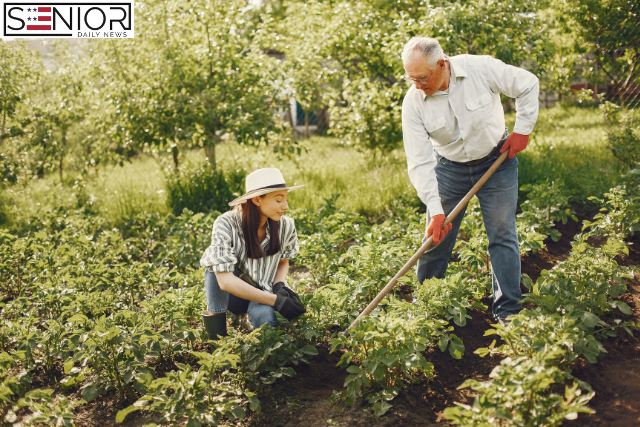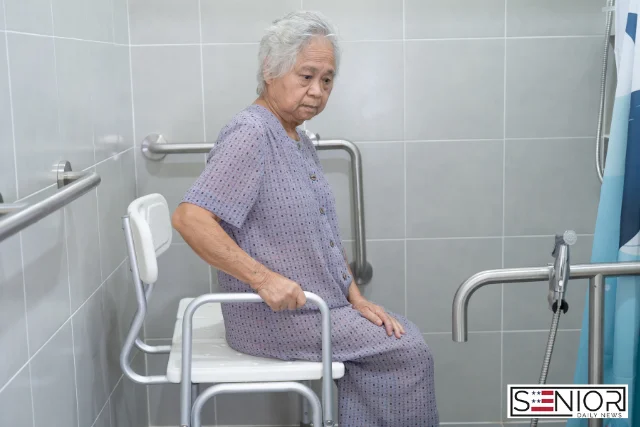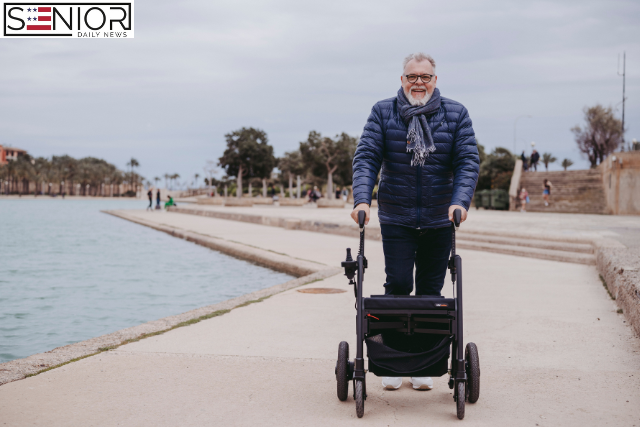The Benefits of Senior-Led Urban Gardening Initiatives

In the heart of bustling cities, a quiet revolution is taking root—urban gardening. And leading the charge in many neighborhoods are seniors, who are transforming vacant lots, rooftops, balconies, and community plots into green sanctuaries. These senior-led urban gardening initiatives are not only cultivating fresh produce but also nurturing community, mental health, and intergenerational connections.
As society faces challenges like aging populations, food insecurity, and environmental degradation, senior-led gardening initiatives offer an inspiring model of resilience and renewal. This article explores the benefits of senior participation in urban gardening, how it compares to traditional gardening efforts, and ways to support and grow such programs.
What Is Urban Gardening?
Urban gardening refers to the practice of growing fruits, vegetables, herbs, and ornamental plants in city environments. It includes:
- Community gardens
- Rooftop gardens
- Balcony and container gardens
- Vertical wall gardens
- Public park plots or allotments
Urban gardening not only maximizes limited space but also addresses food justice, sustainability, and neighborhood beautification.
Why Seniors Are Natural Leaders in Urban Gardening
Seniors bring a wealth of experience, patience, and dedication—traits perfectly suited to gardening. Many older adults grew up with gardens or farming in their communities and are passionate about passing on this knowledge.
Senior-led gardening stands out because it often:
- Focuses on education and mentorship
- Is rooted in sustainable and organic practices
- Prioritizes inclusivity and accessibility
- Encourages slower, thoughtful methods that enhance quality and care
The Health Benefits of Gardening for Seniors
Urban gardening offers a holistic approach to senior wellness, addressing physical, mental, and emotional needs.
1. Physical Health
- Low-impact exercise: Gardening involves movement, stretching, lifting, and walking—all gentle on joints.
- Improved mobility: Tasks like watering or weeding keep muscles engaged.
- Vitamin D exposure: Spending time outdoors helps maintain bone health.
- Better nutrition: Growing fruits and vegetables encourages healthy eating habits.
2. Mental Well-being
- Stress relief: The act of tending plants has been shown to reduce cortisol levels.
- Sense of purpose: Nurturing a garden gives meaning to daily routines.
- Cognitive engagement: Remembering planting schedules and solving garden challenges stimulate the brain.
3. Emotional and Social Fulfillment
- Combats loneliness: Gardening in groups fosters connection and reduces isolation.
- Promotes resilience: Watching things grow offers hope and a reminder of nature’s cycles.
- Encourages community bonds: Neighbors become friends when they plant side by side.
Community Benefits of Senior-Led Urban Gardens
Senior leadership in urban gardening creates a ripple effect across entire neighborhoods.
1. Intergenerational Learning
Elders can share traditional gardening techniques, cultural knowledge, and stories. Youth volunteers or students gain hands-on experience and mentorship. These interactions help bridge generational gaps.
2. Neighborhood Revitalization
Transforming underused spaces into gardens improves aesthetics, deters crime, and increases civic pride. Green areas have also been linked to lower temperatures and improved air quality.
3. Local Food Access
Gardens offer affordable, fresh produce in urban food deserts—areas with limited grocery options. This boosts food security and nutrition, especially in low-income neighborhoods.
4. Environmental Education
Many senior-led gardens integrate composting, water conservation, and pollinator support, teaching sustainability in action.
Comparing Senior-Led vs. Traditional Urban Gardening
| Aspect | Senior-Led Urban Gardening | General Urban Gardening |
|---|---|---|
| Focus | Wellness, community, mentorship | Food production, sustainability, activism |
| Leadership style | Cooperative, patient, experience-driven | Varied: can be fast-paced or youth-centered |
| Design priorities | Accessibility (raised beds, benches) | Productivity or innovation (vertical gardens, tech) |
| Knowledge base | Traditional, ancestral, life experience | Academic or trend-driven |
| Long-term commitment | Often consistent and enduring | May vary due to lifestyle changes |
| Community engagement | High—based on shared values and stories | Depends on individual or group goals |
Both models are valuable, but the senior-led approach emphasizes interpersonal connection, longevity, and wisdom sharing.
Real-Life Examples of Senior-Led Gardening Success
1. GreenThumb in New York City
NYC’s GreenThumb supports over 550 community gardens. Many are led by senior volunteers who teach workshops on composting, herbal medicine, and organic gardening.
2. The Good Food Garden Project – Detroit, MI
Seniors in this program lead younger participants in growing produce for local shelters. The initiative has reduced food waste and improved cross-generational cooperation.
3. Sow and Grow – San Francisco, CA
Senior gardeners collaborate with immigrant communities to plant culturally relevant crops. This fosters inclusion while preserving culinary traditions.
Making Gardens Accessible for Aging Gardeners
Creating gardens that are inclusive of older adults means designing with mobility, safety, and comfort in mind.
Key Considerations:
- Raised Beds: Easier to reach without bending
- Wide Pathways: For walkers or wheelchairs
- Shaded Areas: To prevent overheating
- Seating: Benches for resting
- Accessible Tools: Lightweight and ergonomic
- Signage and Labels: Large-print and easy to read
Community gardens should work with local senior centers, occupational therapists, and accessibility advocates to ensure everyone can participate.
How to Start or Support a Senior-Led Urban Gardening Initiative
1. Identify Community Interest
Talk to local seniors through community centers, churches, or housing facilities. Gauge interest and gather input on needs and goals.
2. Secure Land
Look for vacant lots, park spaces, or unused school grounds. Municipalities often have programs to lease public land for gardening.
3. Get Funding
Sources may include:
- City grants (urban agriculture or senior wellness)
- Corporate sponsorships (especially grocery chains)
- Crowdfunding campaigns
- Partnerships with nonprofits
4. Design with Accessibility in Mind
Work with garden designers who understand mobility issues. Prioritize raised beds, shelter from wind/sun, and comfortable walking surfaces.
5. Offer Training and Mentorship
Even experienced gardeners may need help adapting to urban methods. Offer regular sessions on composting, pest management, and container gardening.
6. Celebrate and Share
Host open houses, harvest days, and intergenerational events. Sharing success stories inspires others and strengthens community bonds.
FAQs: Senior Urban Gardening
Q: Is urban gardening safe for seniors with mobility or chronic health conditions?
A: Yes! With adaptations like raised beds and ergonomic tools, gardening can be safe and therapeutic. Always consult with a healthcare provider.
Q: Can seniors with no gardening experience get involved?
A: Absolutely. Many programs welcome beginners and offer hands-on learning in a supportive environment.
Q: What are the best crops for urban gardens led by seniors?
A: Leafy greens (spinach, kale), herbs (basil, mint), cherry tomatoes, and root vegetables (carrots, radishes) are low-maintenance and rewarding.
Q: How can I find a senior-led garden in my area?
A: Check with local extension offices, community centers, AARP chapters, or search online directories like American Community Garden Association.
Q: How do I involve youth or schools in senior-led gardening?
A: Create mentorship programs or partner with local schools for garden visits, workshops, or volunteer hours.
Final Thoughts: Sowing Seeds of Wellness and Connection
Senior-led urban gardening is about more than growing food—it’s about growing relationships, dignity, resilience, and purpose. These gardens represent a living legacy, where older adults reclaim their role as teachers, caretakers, and changemakers in their communities.
In a world often focused on speed and innovation, these green pockets offer something precious: a slower, wiser, and deeply human way to connect with nature and one another.
By supporting or starting a senior-led garden, you’re not just planting seeds in soil—you’re planting hope, health, and harmony in your neighborhood.
Image Designed Using Canva






